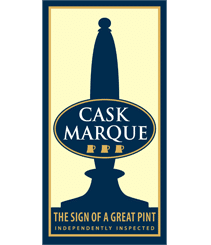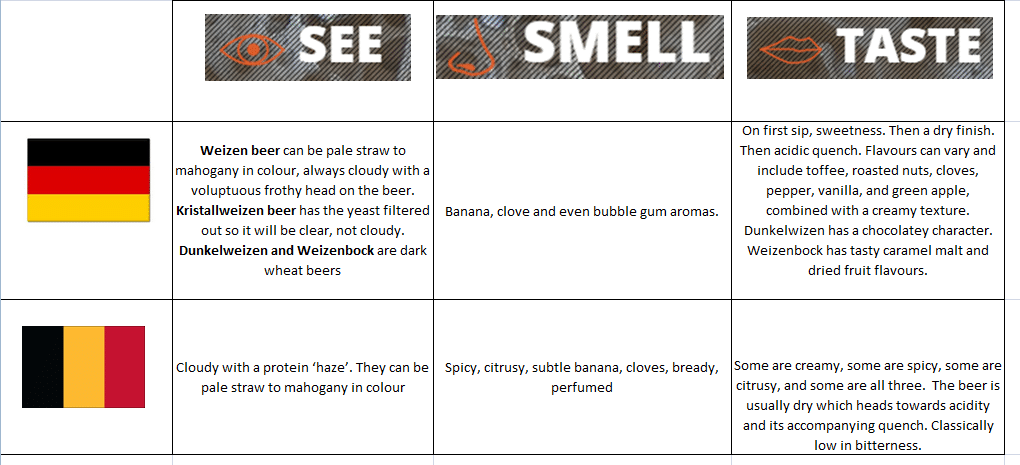The Cask Marque Guide To Beer Styles:
I bet you all have a friend or a colleague who tells you they don’t like beer? I know. It’s unfathomable to you and I. But these mad, sad fools need our guidance because their experience or perception of beer has probably been a poor one. We know that not all beer is the same, we know that saying you don’t like beer is akin to saying you don’t like food.
So, in this new series from Annabel Smith, in-house Beer Sommelier at Cask Marque, we’re going to take a light hearted look at a range of beer styles, and help you persuade the uninitiated masses to try a tipple.
*Spoiler alert: some of these beer styles are NOT cask. Gulp!
Wheat Beer
If there is one beer any novice should try first, it’s wheat beer. Why? Because it immediately dispels the preconceptions that all beer is brown and bitter! This is a beer which is ideal for someone who loves Champagne or Prosecco.
Surprisingly, wheat beer is not made entirely with wheat grain. It typically contains between 30 to 60 percent wheat and the remainder is malted barley. Most brewers tend to prefer barley because this grain has a husk, which filters out the proteins. Wheat doesn’t have a husk so when we brew with it, the beer will always appear hazy.
Where Did Wheat Beers Come From?
Before the invention of modern lagers in the 1840’s, there were broadly two types of beer in Bavaria: smoky, strong, lagered (“stored”) brown ales and light, fresh tasting white or wheat beers. ( Although, as early as the 9th century AD records survive of brewing with wheat across much of the Roman Empire).
In 1516, Reinheitsgebot (the ‘Beer Purity Law’) was passed in Bavaria, stating that beer could only be brewed using barley, hops and water, although brewers were allowed to use wheat if they paid a higher tax on the beer.
When this tax differentiation was removed in 1602, however, wheat beers enjoyed a massive increase in popularity, before falling out of fashion in the 1840’s in favour of modern style lager.
Fast forward to the swinging 60’s when Pierre Celis, a diary manager, revived wheat beer with the addition of coriander, cumin, and the dried peel of Curacao oranges. The result was Hoegaarden, named after his home town. The beer looked and tasted completely different and was the first craft beer of recent origin to become a worldwide hit for a global brewer.
It’s Not Just About Hoegaarden!
Wheat beer has lots of variances, depending on where it’s brewed. I’ll explain more below (stay with us though – there’s lots of German words!)
Weizen (German for ‘wheat’) gets its flavours from the grain, hops and particularly the yeast. By law these beers, when brewed in Germany, must be at least 50 per cent wheat and the remainder barley.
German Wheat Beers are also known as Weissbier, Hefeweizen Weizen, Weizenbock, Kristallweizen, Dunkelweizen
Wit Bier (‘Wit’ is the Flemish word for ‘white’) originates in Belgium. Some of the flavours come from the grain, hops and yeast, but they include other ingredients such as coriander, orange peel, and oats
Belgian and French Wheat Beers are also known as White Beer, Witbier and Bieres Blanche
Characteristics:
To Serve:
Wheat beers are one of the most versatile beers to match with food. The citrus notes CUT through oily fish and COMPLEMENT light shellfish. The bready notes also COMPLEMENT cheese and charcuterie, the creamy mouthfeel CUTS through fiery chilli and quench heat – in fact, wheat beer is one of the best beers to have with a hot curry!
PERFEKT!
Like our beer styles blog? Read the ones on Pale Ales, Stouts and Porters, Trappist & Abbey and Lager.



